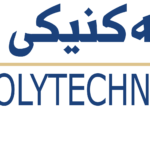- Saman Muhammad Omer
- [email protected]
- 0750 245 4336
- An Efficient Cucumber Leaf Disease Diagnosis using Deep Learning Algorithms
-
In agriculture farming, pests and diseases are the most imperative factor that affects cucumber leaves. Farmers around the globe are currently facing difficulty in recognizing various cucumber leaf diseases. Unfortunately, current manual techniques to diagnose and detect cucumber leaf diseases consumes a large amount of human resources, subjective, laborious and exhibits poor real-time performance. Therefore, there is a demanding need for an effective algorithm that enables the diagnosis of cucumber leaf diseases and pests. This dissertation intends to propose and improve a model using deep learning techniques for the diagnosis and detection of cucumber leaf disease. Throughout the study, various challenges and issues have been identified, necessitating resolution. Foremost, reliable public dataset for real-world scenarios involving cucumber leaf disease images are currently lacking. Secondly, there is a need for an efficient convolutional neural network (CNN) algorithm to effectively balance the trade-off between classifying cucumber leaf diseases and performance. Thirdly, you only look once (YOLOv5) model has raised concerns related to time consumption, storage complexity, low detection accuracy, and limited ability to detect small symptom diseases.
Thus, a new dataset of cucumber leaf disease and pest has been constructed that includes two pests (spider, and leaf miner), two fungal diseases (downy mildew, powdery mildew), one viral disease, and healthy class leaves in a real-world scenario. The dataset has a total of 4868 images. Furthermore, this PhD dissertation focuses on proposing a new CNN algorithm with tuning of hyper-parameters to optimize the model’s performance that comprises image enhancement, feature extraction, and classification. Data augmentation was used to enlarge the datasets and reduce overfitting, while CNN layers were employed to automatically extract features. Then, five cucumber leaf diseases and one healthy leaf are classified. Moreover, an improved YOLOv5 model for precise detection of cucumber leaf disease and pest symptoms was developed. With the aim of reducing the model's size, modifications were applied to the model's hyper-parameters. Additionally, the BottleneckCSP module replaced the C3 module in both the backbone and neck network sections. The detection impact was notably enhanced through the reductions in parameters, number of layers, and computations; in addition to that, the improved model demonstrates the ability to detect even small leaf disease and pest spots. Furthermore, the integration of the convolutional block attention module (CBAM) into both the enhanced and standard YOLOv5l models further demonstrates the effectiveness of the proposed model.
The study evaluated the effectiveness of the proposed CNN model by comparing it to pre-trained models (AlexNet, Inception-V3, and ResNet-50). The experimental results confirmed that the proposed CNN algorithm outperformed the other algorithms in recognizing cucumber disease and healthy leaves, based on both datasets with and without data augmentation. The proposed CNN achieves a recognition accuracy of 98.19% with the augmented self-made dataset and 100% with cucumber plant disease dataset. Furthermore, The experimental results of the detection system indicated that the improved YOLOv5 model achieved a mean average precision (mAP) of 80.10%, along with precision and recall rates of 73.8% and 73.9%, respectively. In a comparative analysis, the improved YOLOv5 model demonstrated superior performance to the original YOLOv5l, YOLOv5n, YOLOv5s, YOLOv5m, and YOLOv5x networks. It also achieved significant reductions in storage complexity, decreasing from 92.8 MB to 13.6 MB, and in training time, reducing from 4 hours and 41 minutes to 2 hours and 58 minutes.
- Erbil Technical Engineering College
- Information Systems Engineering
- Deep learning algorithms


